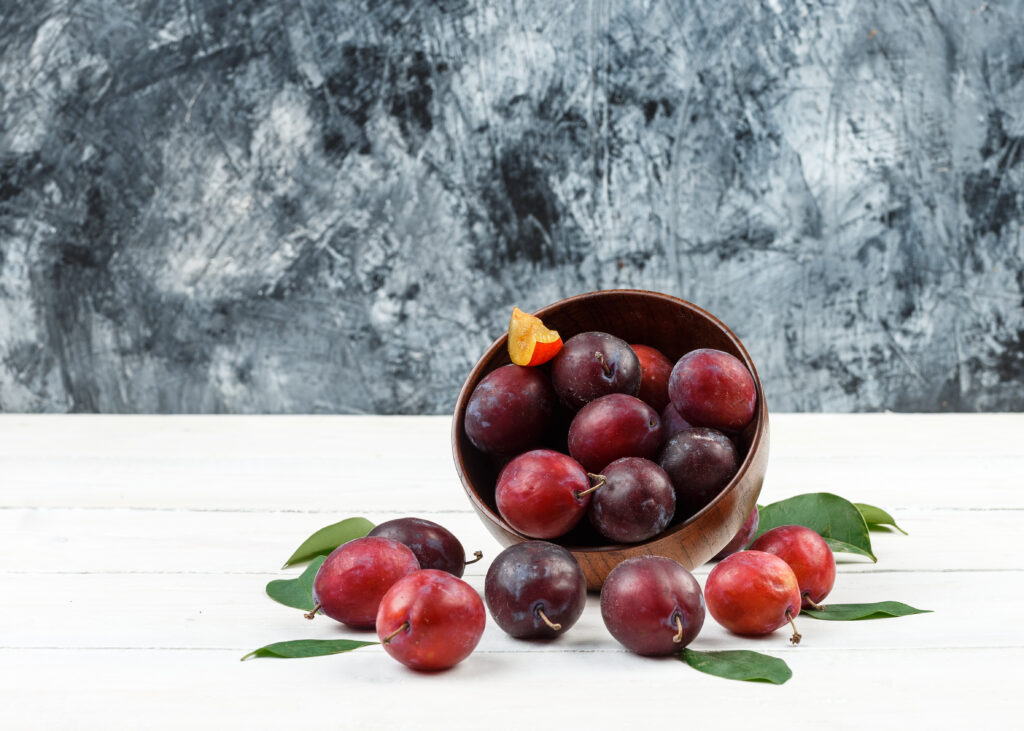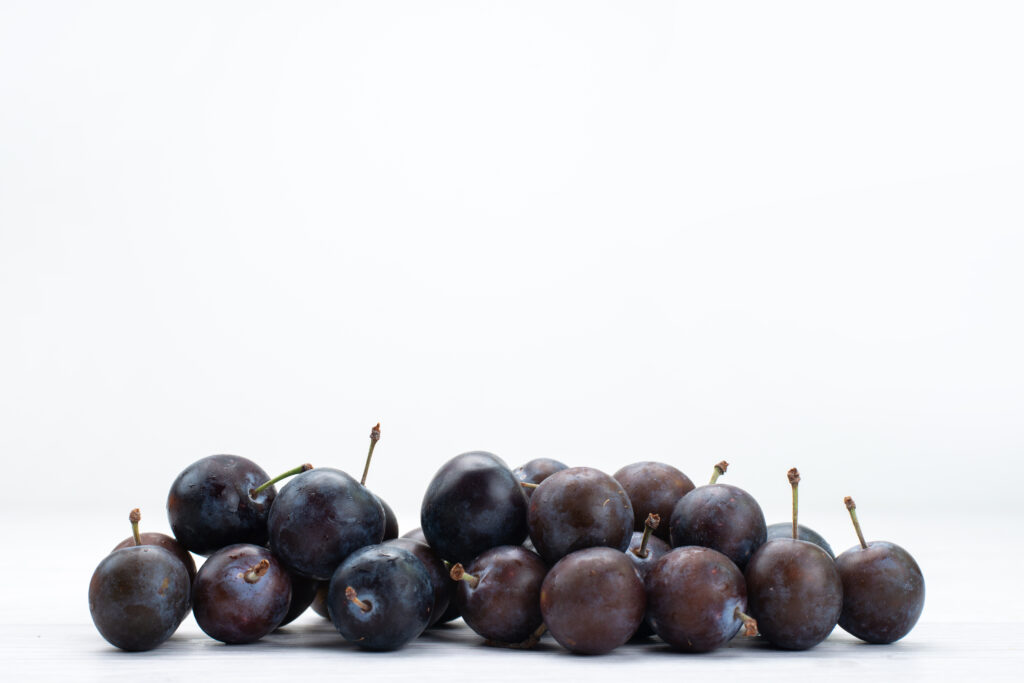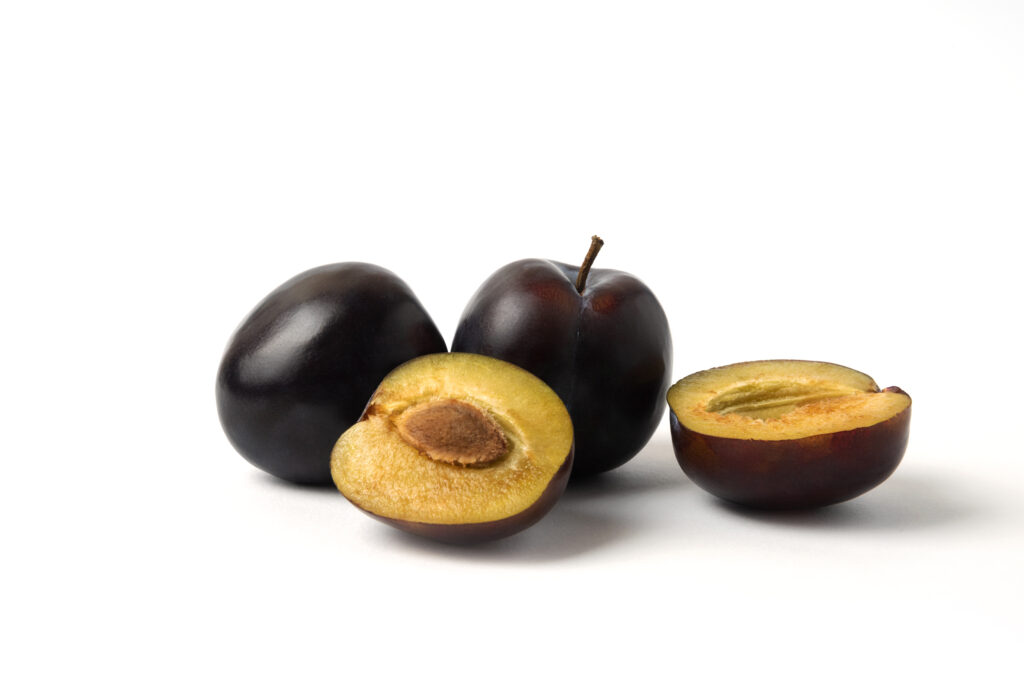Table of Contents
Plums have a little touch of magic to them. Plums aren’t the fruit-world’s most attention-grabbing celebrity (that would be mangoes), nor are they your ordinary day-in-and-day-out apple. Plum fruit, in fact, are seasonal creatives who make their Mid-Summer debut in a flashy box of deep purples, bright reds, and sunny yellows. Plum fruit is just the kind of fruit that cross you yonder, to slow down and savor its juicy, sweet-and-sour flesh, and look into the tremendous benefits of the smooth skin of a plum.
But the plum fruit is more than a beautiful seasonal snack. It’s a nutrition powerhouse, a cultural icon, and a perfect food muse. Whether eating a fresh, sun-warmed plum from the tree or a dried prune with its deep, complex sweetness, we are participating in a tradition that clearly spans thousands of years.
Let’s enter the wonderful world of plum fruit, a fruit often overlooked.
You must read this useful posts for make your diet journey nutritional powerhouse- Avocado benefits, Pineapple benefits, Longan fruit, lychee, Prickly pear, Water chestnut…and more in health-icon.com.

Plum Fruit Benefits
Sure, while we may not highlight 101 advantages (although we could!), the actual quantity of goodness in one plum fruit is phenomenal. From the inside out this fruit is busy working on behalf of your health.
1. A Champion for Your Digestive Health:
This may be the most well-known superpower of the plum, possibly. Plums are a good source of dietary fiber, specifically sorbitol and isatin, both of which have natural laxative effects. Plum fruit help regulate your digestive system and regulate bowel movement and gut health. Let’s not forget about their dried version of themselves—prunes! Prunes have a long, natural, healthy use for getting things moving smoothly.
2. A Powerful Antioxidant:
That official deep color of a purple plum fruit is not simply attractive; it is due to anthocyanins, a form of powerful antioxidant that combats oxidative stress in your body. Oxidative stress is associated with the aging process, chronic inflammation, and potential diseases that plague the body. Antioxidants in plums neutralize free radicals that would otherwise create harm to your body’s cells.
3. A Friend to Your Heart:
Desirable choices, in several ways, plums are loved for your heart health. The unheld fiber source helps lower (bad) LDL cholesterol. Also, the potassium source is ideal for keeping your blood pressure normal, reducing the workload on your cardiovascular system.
4.Supporting Strong Bones:
Studies have shown that dried plum fruits (prunes) are excellent for bone health. They contain nutrients such as potassium, vitamin K and boron—all of which, in concert, increase bone density and may reduce the risk of osteoporosis. It’s a sweet investment for your skeletal health for years to come.
5. Boosting Immunity and Skin Health:
Plums are highly rich in Vitamin C, so they really support your immune system in fighting off infections. Moreover, Vitamin C is essential for the production of collagen, the protein that keeps skin looking youthful, smooth and firm. Eating plums can be a delicious addition to your natural skincare routine.

Plum Nutrition
No need to eat a heap of them either! One medium plum fruit (about 66 grams) is a nutritional powerhouse.
• Low Calorie – It has ~30 calories per fruit, so it’s a guilt-free treat!
• Carbohydrates – It has about 8 grams total carbohydrates, from natural sugars which will provide instant energy.
• Fiber – It has 1 gram to support digestive health and satiety.
• Vitamin C – Provides ~10% of your Daily Value (DV) helping to bolster immunity and skin health.
• Vitamin K – Is essential for blood-clotting and bone metabolism.
• Vitamin A – Improve eyes and immune body.
• Potassium – A mineral that is key to regulating nerve function and blood pressure.
• Antioxidants – A mix of anthocyanins, chlorogenic acid and quercetin, they are a condensed vessel full of vitamins, minerals, and phytonutrients that you will benefit from with each bite.
Plum Teste
Describing the flavor of a plum is akin to describing a piece of music; it has notes, melody, and finish. Plum tastes can vary significantly due to varietal and stage of ripeness.
– The sweet-tart balance: When a plum is perfectly ripe, it is a study in balance; the first bite is almost always greeted with an explosion of bright, tangy juice that makes your mouth water. This experience is quickly accompanied by a deep, honeyed sweetness that coats your tastebuds. The skin, especially in red and purple varietals, sometimes possesses a hint of bitterness, which takes the edge off the sweetness, creating greater complexity.
– The texture: Plums can have flesh that is firm and crunchy (as with the ‘Friar’ variety) or can be soft and meltingly tender (as with the ‘Santa Rosa’ variety). When you bite into a very ripe plum, the flesh almost dissolves on your tongue, releasing its inner juices.
– The finish: The experience of the plum does not end when you swallow it. A good plum leaves a pleasant finish that is slightly floral and sweet, prompting you to reach for another.
Conversely, when a plum is unripe, it is overwhelmingly sour and astringent, and you cannot help but pucker your lips. The secret is to always have the patience to wait for them to be ripe before you eat. Unripe plums need to sit at room temperature until you can push one of them with your finger.

Plum Tree
The magic starts not in the grocery store but on the branch. The plum tree (Prunus domestica and other Prunus species) is a magnificent sight throughout the seasons.
• Spring Spectacle: In early spring, before all the blossoms, the tree is awash in a cloud of delicate white blossoms before it grows any leaves. The five-petaled flowers are not only lovely, and necessary to ensure a future harvest by attracting bees and other pollinator insects in early spring. An orchard in bloom is a beautiful and aromatic experience.
• Summer Canopy: After the petals fall, the tree will fill out with lush green leaves, the energy source for the plum. The plum tree enters a quiet and restful time while the tiny green fruit is ripening and slowly adding size and color to the fruit from the summer sun.
• Harvest Time: By mid-to-late summer the branches will become weighed down by the ripened fruit. A healthy plum tree will produce a fruit load that is sometimes overwhelming, requiring the fruit to be thinned early in the season, to retain size of the remaining fruit for ripening and sweetness.
• Winter Rest: After the harvest, the leaves will turn bright yellow and gold before dropping, and, the tree will enter its sleep stage, storing all of its energy needed for next years life cycle.
Red Plum Fruit
Plums boast an array of colors, but the red plum is in a league of its own. This is the plum, the “plum” that children draw and poets refer to.
The ‘Santa Rosa’ and ‘Satsuma’ are two common examples of red plums. Their hue is famously deep red, often with a bluish bloom that can easily be wiped away to show the beautiful sheen beneath. Inside the glorious skin, the flesh is surprisingly amber in color or a golden yellow, but a lovely contrast appears when you slice into it.
The flavor of a red plum somehow seems to define what a plum should taste like; it is sweet, intense, wine-like sweetness balanced by a tart zing. They are impossibly juicy, making them a great option for eating fresh. Their color also adds flair to other preparations, like fruit salads, tarts and garnishes. When cooked, red plum (and other plums for that matter) turn and collapses into a beautifully colored sauce or jam…and makes for a beloved preserve.
Bringing Plums into Your Kitchen
Don’t let their tenderness fool you. Plums are very versatile.
• Fresh: Eat them right out of hand, plain. Add a sliced plum to yogurt or oatmeal, or diced in salads.
• Grilling: Cut the plum in half, remove the seed, and grill cut-side down for a few minutes. The heat caramelizes the natural sugars, adding a smoky sweetness to plums, making them a delightful accompaniment to grilled meats or as a topping to ice cream.
• Baking: Plum crumbles, cobblers, and tarts have been popular desserts for quite some time for a good reason. The acidity of the fruit balances sweetness of the pastry.
• Savory: Plum sauce is a well-known condiment for duck and pork. Adding chopped plums to a salsa with red onion, cilantro, and a little chili makes a great topping for fish or tacos.
• Preserved: Trying to capture summer in a jar, consider making jam, chutney, or even pickled plums, for something different!
Conclusion
The plum goes from a simple flower to a rich, heart-healthy, voluptuous fruit worthy of applause. They are illustrative of the fact that often the best things in life are simple, seasonal, and have complexity behind them. So, the next time you see plums in a basket at the market, don’t keep walking. Grab some, bring them home, let them ripen on your counter, and enjoy their sweet-tart, and unexpectedly stupendous magic! Your body (and taste buds) will be grateful!
Frequently Asked Questions (FAQs)
What are the benefits of plums?
Plums are a powerhouse of benefits! They are famous for aiding digestion and preventing constipation, thanks to their fiber and sorbitol content. They’re also packed with antioxidants that protect your cells from damage, support heart health by managing cholesterol and blood pressure, and can even contribute to stronger bones. Plus, their Vitamin C gives your immune system a solid boost.
What is plum called in India?
In India, the plum is commonly known as “Aloo Bukhara.” You’ll find this name widely used in local markets, especially for the varieties that are often dried to make prunes. In Hindi, it is also sometimes simply called “Plum.”
Is it okay to eat plums daily?
Yes, for most people, eating a few plums daily is perfectly safe and highly beneficial! Their high fiber and sorbitol content are great for digestion, but overconsumption can lead to stomach upset or diarrhea. As with any food, moderation is key. Enjoying 2-3 plums as part of a balanced diet is a wonderful way to reap their nutritional rewards.